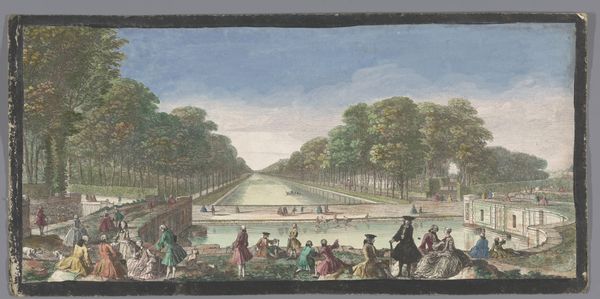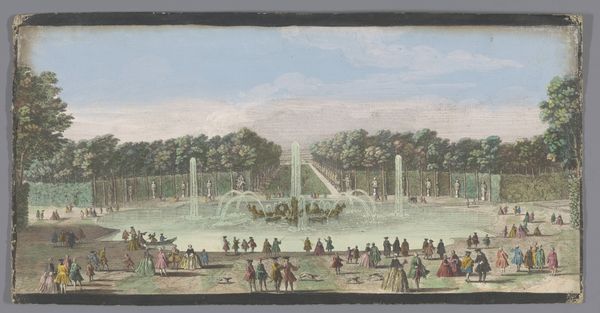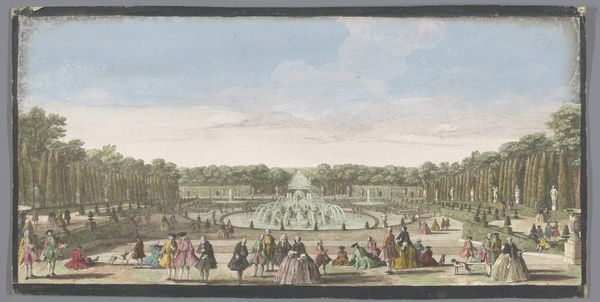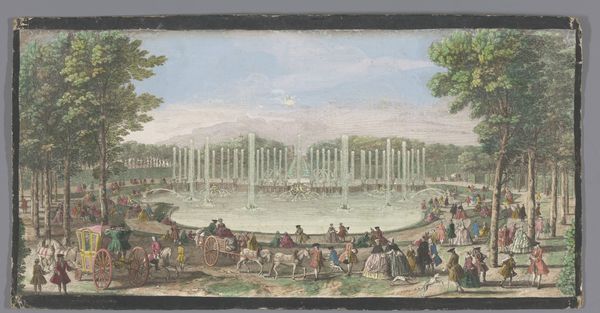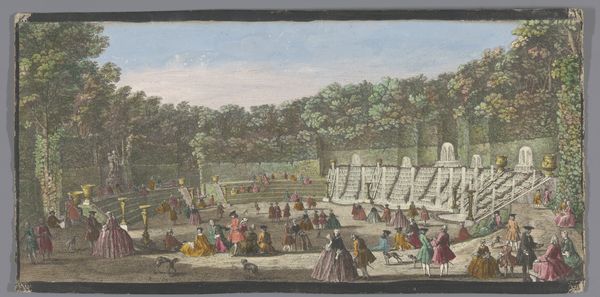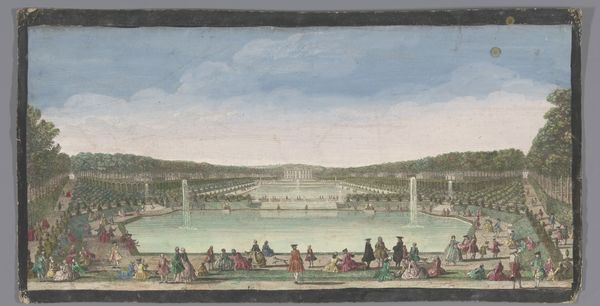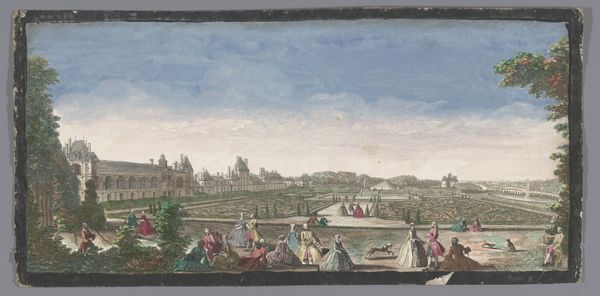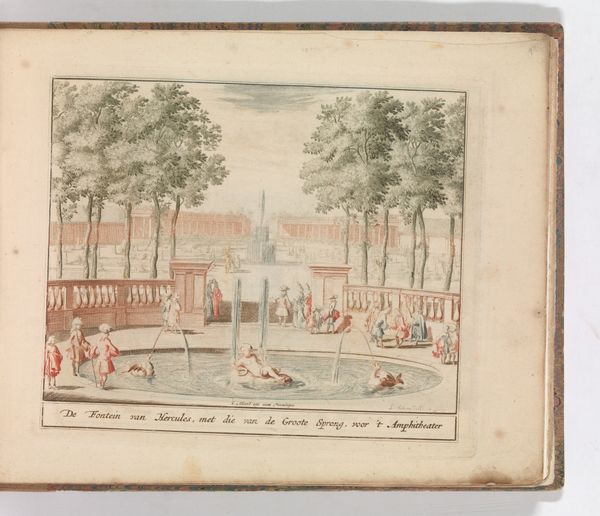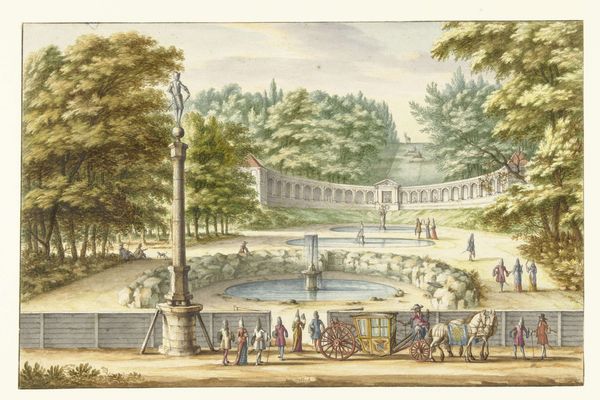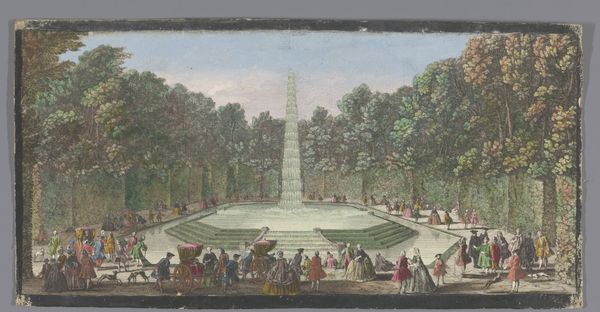
watercolor
#
garden
#
water colours
#
landscape
#
figuration
#
watercolor
#
coloured pencil
#
cityscape
#
genre-painting
#
watercolor
#
rococo
Dimensions: height 241 mm, width 474 mm
Copyright: Rijks Museum: Open Domain
Curator: Just look at this tranquil scene. It's an 18th-century watercolor piece called "Gezicht op het Île Royale in de Tuin van Versailles" held at the Rijksmuseum. What do you make of it? Editor: My first impression is that it feels incredibly staged, almost like a theatrical backdrop. All those precisely placed figures and the rigid symmetry of the garden... It lacks spontaneity. Curator: Exactly! This calculated artificiality is central to understanding Versailles. These formal gardens were designed to reflect the power and control of the monarchy, projecting an image of dominance over nature and society. The layout, the use of water, the manicured trees – all symbols. Editor: Symbols of opulence, certainly. You see all these figures milling about, dressed in their finery? They're performing court life. It's a display of status as much as it is leisure. Curator: It speaks volumes about the cultural memory, this controlled landscape versus the wild, untamed spaces beyond. Rococo favored ornamentation and display, emphasizing sophistication and elegance but this wasn't accessible to all, was it? The gardens of Versailles were strictly controlled in terms of access, reinforcing social hierarchy. Editor: Right. These spaces physically manifested social inequalities. Consider the function of art under absolutism – reinforcing the monarch's authority and portraying an idealized vision of the state. Do you see elements that highlight control? Curator: Oh, everywhere! Notice how the straight lines of the canals contrast with the natural forms of the trees. Also, consider the iconography of the fountains - they are placed on regular intervals in that canal, with each functioning as a clear statement of intent. There's something potent here about human desire to contain, demarcate, categorize. The cultural message resonates over time as well. We continue to project our human will onto the land. Editor: Absolutely, the manipulation of nature becomes a demonstration of power, and this artwork immortalizes that act for the viewer. It all prompts a wider question – how do spaces condition behaviour and reinforce existing power dynamics? Curator: Precisely. This piece reminds us that what seems merely decorative often encodes powerful political and social statements. It's a frozen moment pregnant with intent. Editor: Indeed. So much more than just a pretty picture. A window into a very particular performance of power and privilege.
Comments
No comments
Be the first to comment and join the conversation on the ultimate creative platform.
